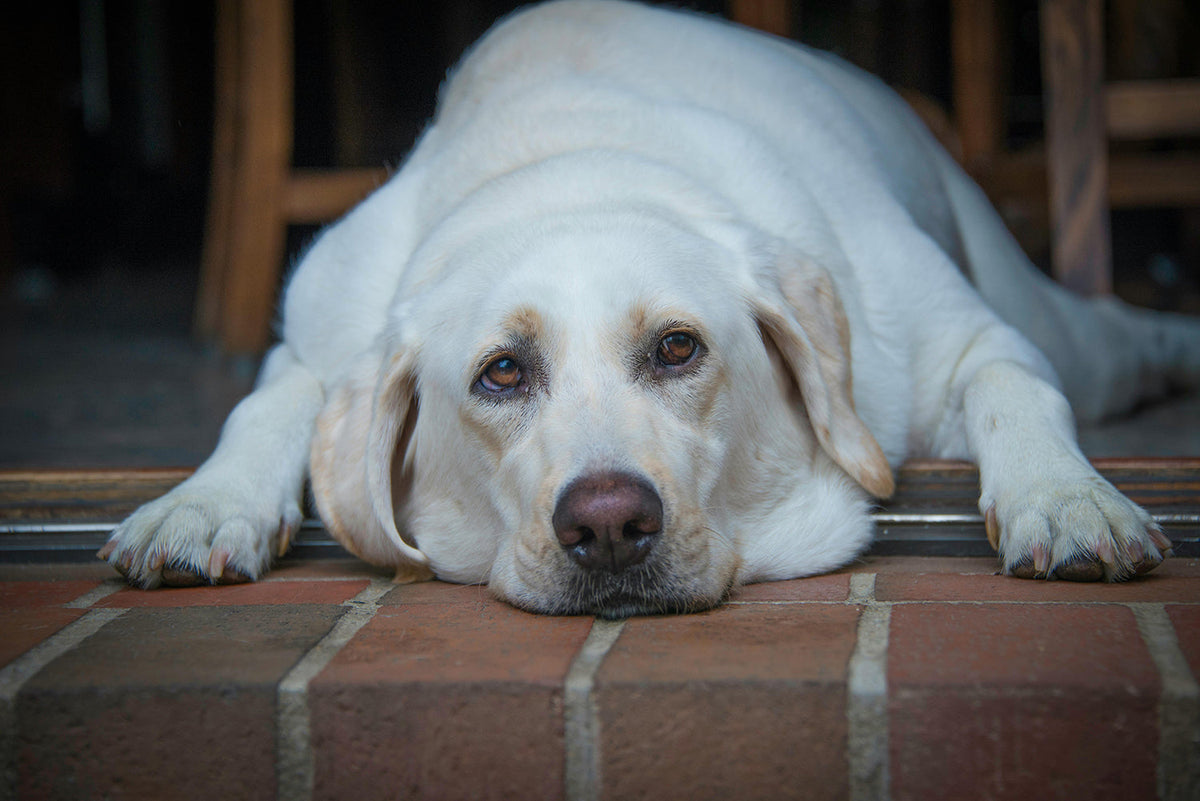
How to tell if your dog is overweight?
|
|
“Is my dog overweight?” Is a common question, and the best the best way of working this out is by body scoring them - more on this later! By placing your hands on your dog and observing their body shape, it is possible to work out if they are healthy or not.
The Kennel Club also supports this - stating “Dogs come in all shapes and sizes. It’s very difficult to work out a perfect weight for every type of dog, so putting them on the scales isn’t always the best way to see if they are overweight. A better way is to check their shape or the contours of their profile".
These signs might indicate that your dog is overweight:
Body condition scoring is a tool described by the World Small Animal Veterinary Association (WSAVA) that vets use when assessing your dog’s weight. This is much more accurate than using breed weight averages because there is so much variation in the height and build of different dogs, even within the same breed. Averages are also not helpful if you have a crossbreed dog.
A BCS between 0 and 9 is assigned to your dog, based on physical features. A healthy dog should be a 4 or a 5 with easily felt ribs (minimal fat covering), an easily seen waist when viewed from above, and the presence of an abdominal tuck.
Owners can perform body condition scoring themselves at home using the WSAVA’s chart, or by speaking to their veterinary team for guidance.
There are many health problems associated with your dog being overweight including:
Studies show that being overweight could significantly reduce your dog’s lifespan.
Make a plan involving the whole household so that everyone knows when and how much your dog should be receiving. Dogs feel more satisfied if their daily rations are split into two or three smaller meals.
The best dog food for overweight dogs is made from lean meat sources and contains increased fibre to help pets feel fuller and more satisfied.
Making sure that your dog’s food is accurately measured out will be key to any weight loss dog food, as well as preventing obesity in the first place. Not sure how much to feed your dog? Check out this blog for guidance.
Providing your dog with occasional good quality natural treats and enrichment alongside their diet is important for both you and your pet. Just make sure that these are accounted for and that you don’t sneak them any extras.
Increasing your dog’s exercise can help, but this must be done gradually and with veterinary guidance if your dog has health issues. Exercise plays an important part in weight loss but remember the saying ‘you can never outrun a bad diet’.
This is a big no no! Tiny bits of cheese, ham or toast crusts really add up, increasing daily calorie intakes.
Make sure you weigh your dog regularly to track changes and keep reassessing their BCS to see if you are making a difference. Speak to your vet for advice on weight loss goals.
Keeping your dog at a healthy body weight is important. Get into the habit of regularly body condition scoring your dog, alongside weighing them on the scales. Your veterinary team will be happy to advise you further.
At Years, we are also here to help. Each Years meal is pre-portioned and tailored to your dog’s weight, age and other nutritional requirements. We are also particularly conscious about breeds that are prone to obesity such as Labradors and Dachshunds. If you have any questions for the team, please don’t hesitate to get in contact.
Dogs that are overweight are at a higher risk of developing diabetes. Diabetics are unable to control their blood sugar levels, needing insulin injections and regular veterinary checks.
Check that no visitors or family members are sneaking your dog table scraps and make sure you’re feeding the right amount of food for your pet’s ideal body weight. Some health conditions such as hypothyroidism can cause weight gain, so speak to your vet if you are concerned.
Overweight dogs may breathe faster than other dogs. This is because extra body fat is putting more pressure on the heart and airways making it harder work to get oxygen around their bodies.

